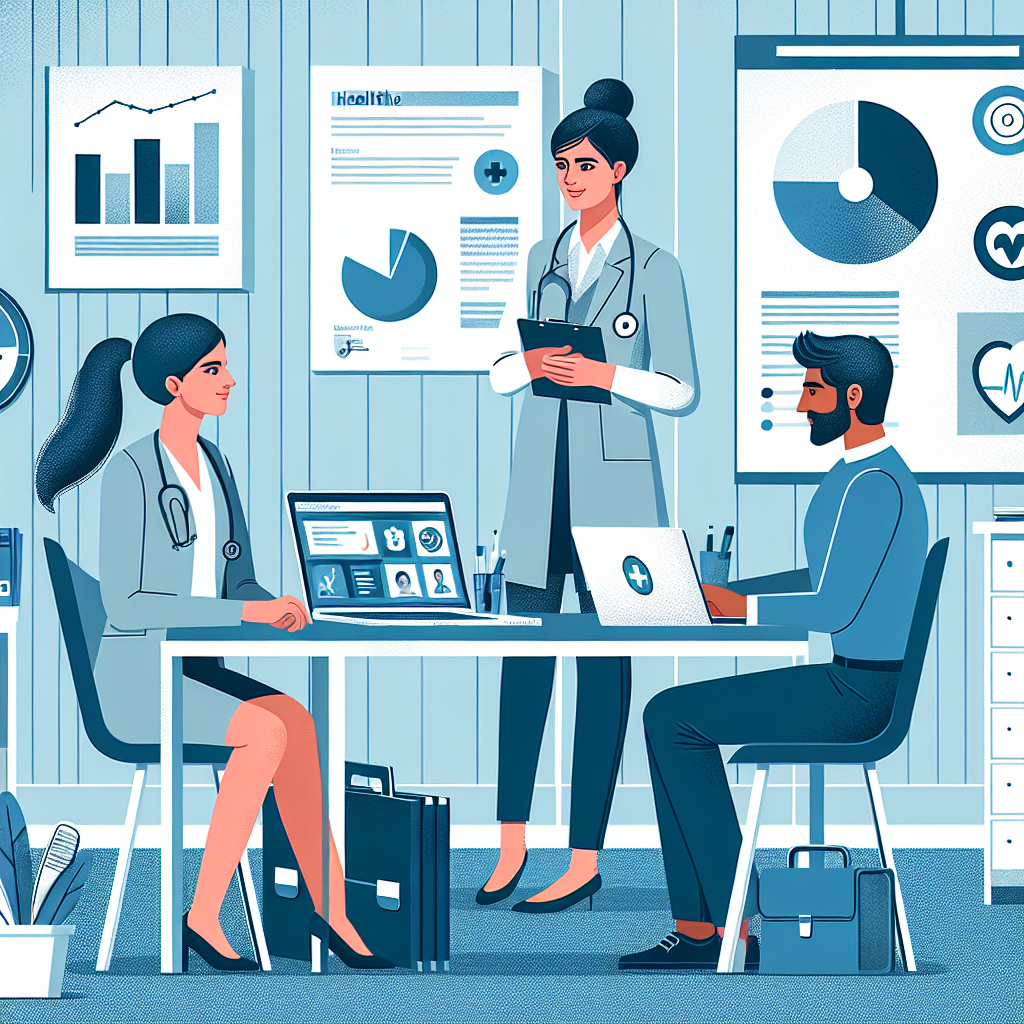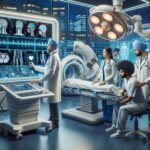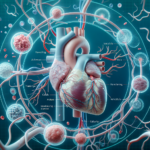
When we think about the cutting edge of healthcare marketing, 3D medical animations stand out as a beacon of innovation. These dynamic visuals are not just eye candy; they’re powerful tools that bring clarity to complex medical concepts and bridge the gap between healthcare professionals and patients. Let’s dive into how these animations are changing the game.
Imagine trying to explain a surgical procedure with just words or a static diagram. Now, picture showing that same procedure in a detailed, step-by-step animation. Suddenly, the lights come on, and understanding dawns. That’s the magic of 3D medical animations.
Transforming Patient Education with 3D Medical Animations
Remember the old saying, “A picture is worth a thousand words”? In the realm of healthcare, a 3D animation could be worth a million. With the ability to depict intricate procedures and the inner workings of the human body in motion, these animations educate patients in a way that’s both engaging and enlightening.
And it’s not just about looking good. These animations empower patients to make informed decisions about their health, leading to better outcomes and increased satisfaction with their care.
Key Takeaways: Article-at-a-Glance
- 3D medical animations simplify complex medical information, making it accessible to everyone.
- They enhance patient understanding, leading to better healthcare outcomes.
- Animations are a powerful tool for healthcare professionals to communicate with peers and patients.
- They help healthcare brands stand out in a competitive market.
- Creating effective 3D medical animations requires a blend of scientific accuracy and creative storytelling.
Decoding the Impact of 3D Visuals in Healthcare Communication
Let’s cut to the chase: 3D animations in healthcare do more than just look pretty. They make the invisible visible, and the incomprehensible, well, comprehensible. By turning abstract medical jargon into vivid, relatable visuals, these animations help patients and healthcare professionals alike grasp the complexities of health and disease.
And the impact? It’s huge. When patients understand their conditions and treatments better, they’re more likely to follow through with their care plans. That means fewer complications and readmissions, and ultimately, a healthier community.
The Genesis of 3D Medical Animation in Healthcare Marketing
The journey of 3D medical animation from a novel concept to a marketing must-have is a story of technology meeting necessity. As healthcare becomes more advanced, the need for equally advanced communication tools becomes critical.
Think of it as evolution in action. Just as healthcare has grown more sophisticated, so too has our ability to communicate about it. 3D medical animations are the natural next step in that evolution.
And let’s not forget the role of patient demand. Today’s healthcare consumers are savvy; they want to understand their health and treatment options. 3D animations meet that demand head-on, delivering the information patients crave in a format they can easily digest.
Tracing the Evolution from Traditional Methods to Advanced Graphics
Not so long ago, the best we could do to explain medical procedures was with charts, models, and maybe a grainy video. Now, we have 3D animations that can show every angle, every movement, and every aspect of a medical concept.
This isn’t just a step up; it’s a quantum leap forward. And as we leave those old methods behind, we’re finding that patients and healthcare providers alike are embracing the change.
The Convergence of Science and Digital Artistry
Creating a 3D medical animation isn’t just about knowing the science; it’s about bringing that science to life. It’s where the precision of medicine meets the creativity of digital art.
And it’s not just any art—it’s art that has the power to inform, to educate, and to inspire. When done right, it can change the way we think about health and healthcare.
So, as we move forward, remember: 3D medical animations are more than just marketing tools. They’re a new language for healthcare—a language that speaks to everyone.
Technological Synergy: Tools and Software Crafting the Future of Medicine
The tools and software behind 3D medical animations are the unsung heroes in this narrative. Cutting-edge software like Autodesk Maya, 3ds Max, and Cinema 4D, paired with powerful rendering engines, are enabling creators to produce animations that are not just visually stunning but scientifically accurate.
These technologies are becoming more user-friendly, too. That means it’s easier than ever for teams to collaborate, iterate, and produce medical animations that can make a real difference in people’s lives.
And it’s not just about the software. Advances in hardware, like high-performance computing and graphics processing, are pushing the boundaries of what’s possible. It’s a perfect storm of technology that’s setting the stage for a revolution in medical communication.
Storytelling in Science: Crafting Narratives via 3D Animations
Science is a story, and 3D medical animations are its most compelling narrators. These animations take the viewer on a journey, whether it’s following the path of a medication as it travels through the body or witnessing the step-by-step progression of a surgical procedure.
But it’s not just about the visuals; it’s about weaving a narrative that resonates. The best medical animations tell a story that educates, engages, and sticks with the viewer long after the screen goes dark.
Remember, the goal is to connect with the audience on an emotional level, as well as an intellectual one. That’s the kind of storytelling that can truly change behavior and improve health outcomes.
Benefits of Integrating 3D Animations in Healthcare Marketing
The perks of using 3D animations in healthcare marketing are as clear as a high-definition MRI scan. Let’s break down the top benefits.
Improving Patient Comprehension and Engagement
First up, patient understanding. With 3D animations, complex medical information becomes something patients can see, understand, and engage with. It’s a game-changer for patient education, and it’s leading to better-informed patients who are more involved in their care.
And when patients are engaged, they’re more likely to follow treatment plans, which can lead to better health outcomes. It’s a win-win for patients and healthcare providers alike.
Streamlining Complex Information into Digestible Visual Storytelling
Next, let’s talk about simplification. 3D animations distill medical complexity into something digestible. They break down barriers to understanding by presenting information in a way that’s intuitive and easy to follow.
It’s like replacing a medical textbook with a highlight reel of the most important points, presented in a way that anyone can grasp. This isn’t just good for patients; it’s good for anyone who needs to understand medical information quickly and clearly.
Enhancing Brand Presence in Competitive Pharma Landscape
Finally, there’s the competitive edge. In the crowded pharmaceutical market, 3D animations can help a brand stand out. They’re a powerful way to showcase the innovation and effectiveness of medical products and services.
Animations can turn a brand into a storyteller, not just a seller. And in a world where every brand is vying for attention, those that can tell the best stories are the ones that will be remembered.
Strategies for Implementation
Knowing the benefits of 3D medical animations is one thing; implementing them effectively is another. Let’s look at how to do it right.
Aligning 3D Animation Goals with Healthcare Marketing Objectives
First, align your animation goals with your overall marketing objectives. Are you trying to increase brand awareness, educate patients, or showcase a new product? Your animations should be designed with these goals in mind.
And don’t forget about measurement. Establish clear metrics for success upfront, so you can track the impact of your animations and adjust your strategy as needed.
Remember, the most effective 3D animations are those that fit seamlessly into a broader marketing strategy, complementing and enhancing your other efforts.
Target Audience Analysis for Maximum Impact
Who are you talking to? That’s the million-dollar question. Your 3D medical animations must resonate with your specific audience, whether they’re patients, doctors, or investors. Dig into demographics, psychographics, and behavior patterns. The better you understand your audience, the more targeted and effective your animations will be.
For instance, animations aimed at children will be vastly different from those designed for adults managing chronic conditions. Tailor your content to the age, education level, and cultural background of your audience for maximum impact.
Measuring the Success of 3D Medical Animations
Success in marketing is never a shot in the dark. It’s about setting goals, tracking progress, and analyzing results. With 3D medical animations, this means looking at both qualitative and quantitative data to gauge effectiveness.
Evaluating Patient Outcomes and Knowledge Retention
Are patients better off after watching your animations? Do they understand their conditions and treatments more clearly? Use surveys, quizzes, and follow-up appointments to measure knowledge retention and patient outcomes. If patients are retaining information and experiencing better health as a result, your animations are hitting the mark.
Metrics Tracking in Healthcare Animation Marketing
On the marketing side, key performance indicators (KPIs) like view count, engagement rates, and conversion metrics can tell you a lot about the reach and impact of your animations. Dive into the analytics to see how viewers interact with your content. Are they watching the whole thing? Sharing it? Taking action afterward? These metrics will guide your future marketing efforts and help you refine your approach.
Case Studies: Pioneering 3D Animation in Health Education
Real-world examples bring the power of 3D medical animations into sharp focus. Let’s look at a couple of case studies that showcase their transformative potential.
Revolutionizing Patient Understanding of Surgical Procedures
Consider the case of a hospital that introduced 3D animations to explain complex surgical procedures to patients. Prior to this, patients struggled to grasp the intricacies and risks involved. Post-implementation, not only did patient comprehension skyrocket, but the hospital also saw a significant decrease in pre-surgery anxiety and an increase in patient satisfaction scores.
Innovative Promotion of Pharmaceutical Products Through Animation
Then there’s the pharmaceutical company that used 3D animations to illustrate the mechanism of action of a new drug. This approach made the drug’s benefits and differentiators crystal clear, leading to a successful launch and strong early adoption by healthcare providers.
Future Prospects of 3D Animation in Medical Marketing
The future of 3D medical animations is as bright as the screens they’re displayed on. We’re looking at a horizon where virtual reality (VR) and augmented reality (AR) play a role in patient education and healthcare marketing. These technologies will take the immersive experience of 3D animations to the next level, offering even more interactive and engaging ways to understand health and medicine.
As 3D animation technology continues to advance, we’ll see even more hyper-realistic and personalized content. The goal? To make every patient feel like the animation was made just for them, addressing their unique concerns and questions.
The bottom line is this: 3D medical animations are not just a passing trend. They’re a vital part of the future of healthcare marketing, one that offers endless possibilities for innovation and connection.
Anticipating Trends: Virtual Reality and Augmented Reality Integration
As we look ahead, the integration of Virtual Reality (VR) and Augmented Reality (AR) with 3D medical animations is not just exciting—it’s set to revolutionize patient education and engagement. Imagine donning a VR headset and walking through a beating heart or watching a drug interact with cells in real-time through AR glasses. This isn’t science fiction; it’s the future of healthcare marketing, and it’s closer than you think.
For marketers, this means staying on the cutting edge of technology and being ready to adopt these tools as they become mainstream. The immersive experiences offered by VR and AR can take your storytelling to new dimensions, literally. It’s about creating an experience so real, patients can’t help but be captivated and informed.
Continued Evolution of Patient-Centric Visual Solutions
The evolution of 3D medical animations is ongoing, with a clear trend towards more personalized and patient-centric solutions. The goal is to create animations that speak directly to a patient’s condition, treatment options, and concerns, making them feel seen and understood.
As healthcare marketers, we must continue to push the boundaries of what’s possible, always with the patient’s needs and experiences at the forefront. By doing so, we can ensure that our 3D animations remain not just relevant, but essential tools in the patient care journey.
Structured Steps for Creating Your Own 3D Medical Animation
Ready to create your own 3D medical animation? Let’s walk through the structured steps to bring your vision to life.
Conceptualizing the Medical Narrative
The first step is conceptualizing the narrative. What story are you trying to tell? Whether it’s the journey of a medication through the body or the impact of a disease on a cell, your animation needs a clear and compelling storyline. This is where you decide what to include, what to simplify, and what to highlight. Keep the patient’s perspective in mind to ensure that the narrative is relatable and understandable.
Assembling a Talented Team of Medical and Animation Specialists
Next, assemble your dream team. You’ll need a mix of medical experts who understand the content and animation specialists who can bring it to life. Look for individuals who not only have the technical skills but also the ability to collaborate and innovate. This team will be the engine that drives your animation from concept to reality.
Remember, the key to a successful animation is accuracy and creativity. Your team should be as committed to getting the science right as they are to making it look amazing.
Publishing and Promoting Animated Content Across Platforms
Once your animation is ready, it’s time to publish and promote it across platforms. This means not just uploading it to your website, but also sharing it on social media, YouTube, and other channels where your audience spends time.
Don’t forget to optimize your content for each platform to ensure the best viewing experience. And consider paid promotion to give your animation an initial boost and reach a wider audience.
Overcoming Challenges in 3D Medical Animation Production
Creating 3D medical animations isn’t without its challenges. Let’s address some common hurdles and how to overcome them.
Addressing Common Pitfalls in Scientific Accuracy and Regulatory Compliance
One major challenge is ensuring scientific accuracy and regulatory compliance. Your animations must be medically accurate and adhere to all relevant guidelines and regulations. This means rigorous fact-checking and possibly legal review.
It’s crucial to involve healthcare professionals throughout the production process to verify that the content is correct and compliant. This step cannot be overlooked—if your animation is scientifically inaccurate or non-compliant, it could do more harm than good.
By following these steps and being mindful of potential challenges, you can create 3D medical animations that not only look great but also make a real difference in the world of healthcare marketing.
Navigating Budget Constraints and ROI Optimization
Budgets are tight, I get it. But here’s the deal: investing in 3D medical animations can offer a solid return on investment (ROI). To navigate budget constraints, start by defining your scope clearly. What’s essential, and what’s nice to have? Prioritize the core message and use resources wisely.
Work with animation teams that can scale solutions to your budget. Sometimes, a shorter animation or a modular approach, where you build up your content library over time, can be cost-effective strategies. Also, consider the long-term benefits. A well-made animation can serve multiple purposes and be used across various platforms, maximizing your ROI.
And don’t forget to track the performance. If your animations are increasing patient engagement or reducing consultation times, they’re saving you money in the long run. That’s the kind of ROI that can justify the initial investment and pave the way for future projects.
Realizing the Full Potential of 3D Animated Content
To fully harness the power of 3D animations, integrate them into your broader communication strategy. They should work hand-in-hand with your other educational and marketing materials, reinforcing the same messages and brand identity.
Also, consider the full range of applications. Beyond patient education, use animations for staff training, investor presentations, and at conferences. The more touchpoints you have, the more value you extract from your content.
Finally, stay up-to-date with the latest trends and technologies. As virtual and augmented reality become more accessible, there’s potential to take your 3D content to the next level. Keep innovating, and you’ll keep your audience engaged.
Frequently Asked Questions (FAQ)
What are the primary uses of 3D medical animations in healthcare marketing?
3D medical animations serve a buffet of purposes:
- Patient education: They simplify complex medical concepts into understandable visuals.
- Professional training: They provide a detailed view of medical procedures for healthcare providers.
- Marketing: They showcase the mechanisms and benefits of medical products and services.
- Engagement: They capture attention at conferences, on social media, and in waiting rooms.
How do 3D medical animations improve patient understanding and compliance?
Animations translate medical jargon into a visual language that’s easy to grasp. When patients understand what’s happening in their bodies and why a treatment is necessary, they’re more likely to follow through with their care plan. It’s about making the invisible visible and the complex simple.
What are the key steps in developing a successful 3D medical animation?
Here’s your roadmap:





